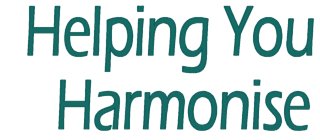Add a comment
Singing on the Off-Beat, Part 1
‹-- PreviousNext --›Every so often, it seems that everyone I talk to is grappling with the same challenges. Well, maybe not everyone, but enough to feel that we have something of a theme going on, and thus an opportunity to try to be helpful to multiple ensembles at once.
A conductor recently messaged me with the following clear summary of the problem:
a couple of our sections are having real trouble getting into singing off the beat. A good number of our songs have crotchet notes aligned on the half beat and they're often getting pulled into alignment with the beat instead. I wonder if you have any good ideas for how we can encourage off-beat singing?
The thing about singing off the beat is that to do it you need a really secure structure of the on-beats so you can bounce off them cleanly and reliably. This is something that is built both by musicianship exercises, to build that structure internally in the performers, and in the music by the composers and arrangers who write off-beat passages. (This is true not just of singing of course; I am visited by the memory of the clarinet parts in the 2nd subject of Schubert’s Unfinished and a frustrated conductor on an orchestral course I participated in many years ago.)
The first of these, rhythm training is often best started off by clapping: percussive sounds offer precision so you can really hear when things are landing where they need to and when they need tightening up. Also, the visibility of physical gesture gives a way for people to coordinate together and help each other into the same groove.
Here are a couple of useful rhythms for clapping games.
Start off by clapping all together to learn the rhythm, then send people off in pairs to clap them as a round, the first at the distance of 2 crotchets, the second at the distance of a bar. Doing it in pairs means that each individual has to take responsibility for their own part and can’t just clap along with the group around them; this also helps to identify who finds it easy and who needs more help. At the same time, having multiple pairs doing it simultaneously sets up an overall sonic environment of running quavers, so that individuals only need to think about the specifics of the rhythms, while tempo control is managed collectively.
Obviously, the first rhythm is simpler, so start with this one, and don’t move on to the second until people have got the hang of it. By this I mean that they have relaxed and are enjoying the interactions rather than having to concentrate hard to keep going, and are making fewer mistakes. You’re unlikely to eradicate all mistakes, as when people relax is when they lose concentration, but there’s a difference between slip-ups due to inattention and struggling to stay in the groove at all.
You can than morph from clapping to vocalising them, e.g:
You’ll note that I have made the pitch structures here correlate with rhythmic structures: all the notes on the beat are Do, all those off the beat are on Mi. This helps cement the conceptual structures, as well as giving a clearer aural indication as to whether people are coping well with it or not.
You can also devise exercises that combine on-beat and off-beat events in the same person, such as:
Again, start off with percussive sounds, as this gives clear information about accuracy.
When I was playing about with these in preparation for this post, I then escalated this one to more like the kind of figure you get in arrangements, and had an interesting experience that will inflect how I think about the second stage of the process. Which is now going to be a separate post as this one is getting plenty long enough and we’re still just doing clapping games.
So I’ll just leave you with this one to be playing with and we’ll start with it next time and see if you had the same experience as I did.
















